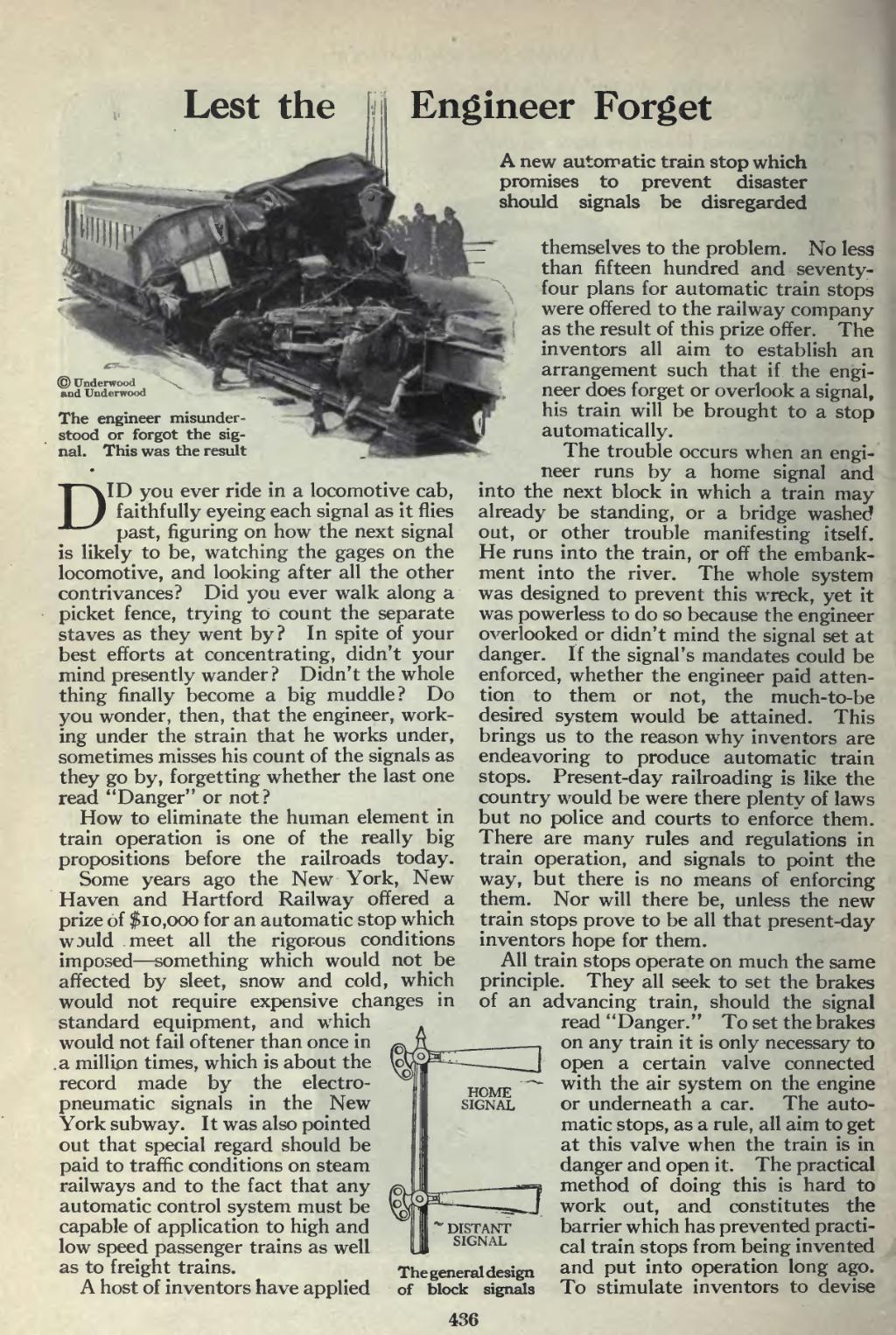Lest the jj Engineer Forget
���The engineer misunder- stood or forgot the sig- nal. This was the result
��DID you ever ride in a locomotive cab, faithfully eyeing each signal as it flies past, figuring on how the next signal is likely to be, watching the gages on the locomotive, and looking after all the other contrivances? Did you ever walk along a picket fence, trying to count the separate staves as they went by? In spite of your best efforts at concentrating, didn't your mind presently wander? Didn't the whole thing finally become a big muddle? Do you wonder, then, that the engineer, work- ing under the strain that he works under, sometimes misses his count of the signals as they go by, forgetting whether the last one read "Danger" or not?
How to eliminate the human element in train operation is one of the really big propositions before the railroads today.
Some years ago the New York, New Haven and Hartford Railway offered a prize of $10,000 for an automatic stop which wjuld meet all the rigorous conditions imposed — something which would not be affected by sleet, snow and cold, which would not require expensive changes in standard equipment, and which would not fail oftener than once in a million times, which is about the record made by the electro- pneumatic signals in the New York subway. It was also pointed out that special regard should be paid to traffic conditions on steam railways and to the fact that any automatic control system must be capable of application to high and low speed passenger trains as well as to freight trains. The general design
A host of inventors have applied of block signals
���A new automatic train stop which promises to prevent disaster should signals be disregarded
themselves to the problem. No less than fifteen hundred and seventy- four plans for automatic train stops were offered to the railway company as the result of this prize offer. The inventors all aim to establish an arrangement such that if the engi- neer does forget or overlook a signal, his train will be brought to a stop automatically.
The trouble occurs when an engi- neer runs by a home signal and into the next block in which a train may already be standing, or a bridge washed out, or other trouble manifesting itself. He runs into the train, or off the embank- ment into the river. The whole system was designed to prevent this wreck, yet it was powerless to do so because the engineer overlooked or didn't mind the signal set at danger. If the signal's mandates could be enforced, whether the engineer paid atten- tion to them or not, the much-to-be desired system would be attained. This brings us to the reason why inventors are endeavoring to produce automatic train stops. Present-day railroading is like the country would be were there plenty of laws but no police and courts to enforce them. There are many rules and regulations in train operation, and signals to point the way, but there is no means of enforcing them. Nor will there be, unless the new train stops prove to be all that present-day inventors hope for them.
All train stops operate on much the same principle. They all seek to set the brakes of an advancing train, should the signal read ' ' Danger. ' ' To set the brakes on any train it is only necessary to open a certain valve connected with the air system on the engine or underneath a car. The auto- matic stops, as a rule, all aim to get at this valve when the train is in danger and open it. The practical method of doing this is hard to work out, and constitutes the barrier which has prevented practi- cal train stops from being invented and put into operation long ago. To stimulate inventors to devise
��DISTANT SIGNAL
��436
�� �
